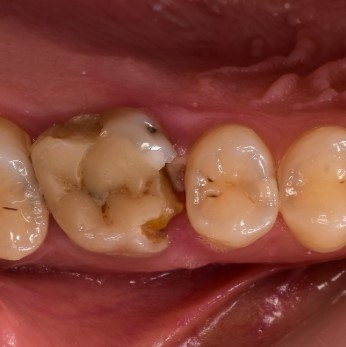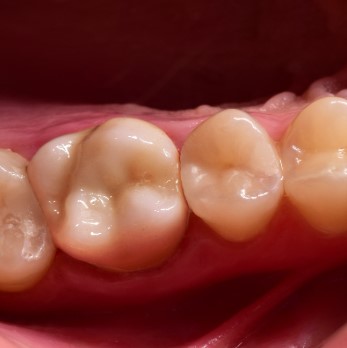Dental Fillings
Dental Fillings
Dental fillings are performed when a tooth is damaged, usually due to decay. Tooth decay occurs when bacteria in the mouth produce acids that damage the enamel (the outer layer) of the teeth. If the damage is significant, dentists place fillings to repair and protect the tooth, thus restoring its functionality and appearance.
- Materials Used for Filling Cavities:
-Gold Fillings: These are very strong and can last up to 15 years with proper care. However, they are much more expensive than silver amalgam fillings and require more than one dental visit for proper placement. In Albania, many people choose these fillings for their durability.
-Silver Amalgam Fillings: These are very strong and durable but are often considered unattractive aesthetically. They also tend to expand and contract, increasing the risk of cracks in the teeth compared to other types of fillings. Some individuals express concerns about the long-term safety of these fillings since they contain mercury, a substance considered neurotoxic. Dentists in Albania provide advice on choosing the right material.
-Composite Fillings: This is an attractive option since they can match the color of your teeth very well. However, they are more expensive than silver amalgam fillings and do not offer the same durability. A dentist in Tirana can help you make the right choice for your needs.
-Ceramic Fillings: Made of porcelain, these offer a very aesthetic appearance and are also highly durable. However, they are more expensive than silver amalgam fillings and can cause wear on opposing teeth if the porcelain becomes rough.
-Glass Ionomer Fillings: Typically last less than five years, but are a good choice for children, especially when their teeth are changing. Another advantage of these fillings is that they can release fluoride, which helps prevent decay. Dental tourism in Albania offers many options for high-quality treatments.
- Steps for Filling a Tooth:
- Examination and Diagnosis: Dentists start with a thorough examination of the teeth and may use X-rays to identify cavities.
- Anesthesia: If necessary, dentists administer local anesthesia to ensure the patient does not feel pain during the procedure.
- Removal of Decay: Dentists use special tools to remove the damaged parts of the tooth.
- Cleaning: After removing the decay, the filling area is thoroughly cleaned to eliminate any bacteria and debris.
- Insertion of Filling Material: The chosen filling material (such as amalgam, composite, etc.) is inserted into the cavity and shaped to fit the tooth.
- Shaping and Fitting: Dentists check to ensure the filling is level with the other teeth and make any necessary adjustments.
- Finalization: After verifying the fit, the filling is hardened (if necessary), and dentists provide instructions for post-procedure care.
- Follow-Up Check: A follow-up visit may be scheduled to check how the filling is functioning after a few months.
- Conclusion
This procedure is common and typically lasts about an hour, depending on the complexity of the case. Dentists in Albania, particularly in Tirana, offer professional services to ensure the best dental care.
Don’t waste time, schedule your appointment for a consultation with our doctors!
Welcome!


Frequently Asked Question
How painful are dental fillings?
Getting a cavity filled can be stressful, but it doesn’t always need to cause pain. Small surface cavities can be filled in less than 30 minutes with little to no discomfort. Deeper cavities that are near a tooth’s pulp may be more painful and take longer to fill.



